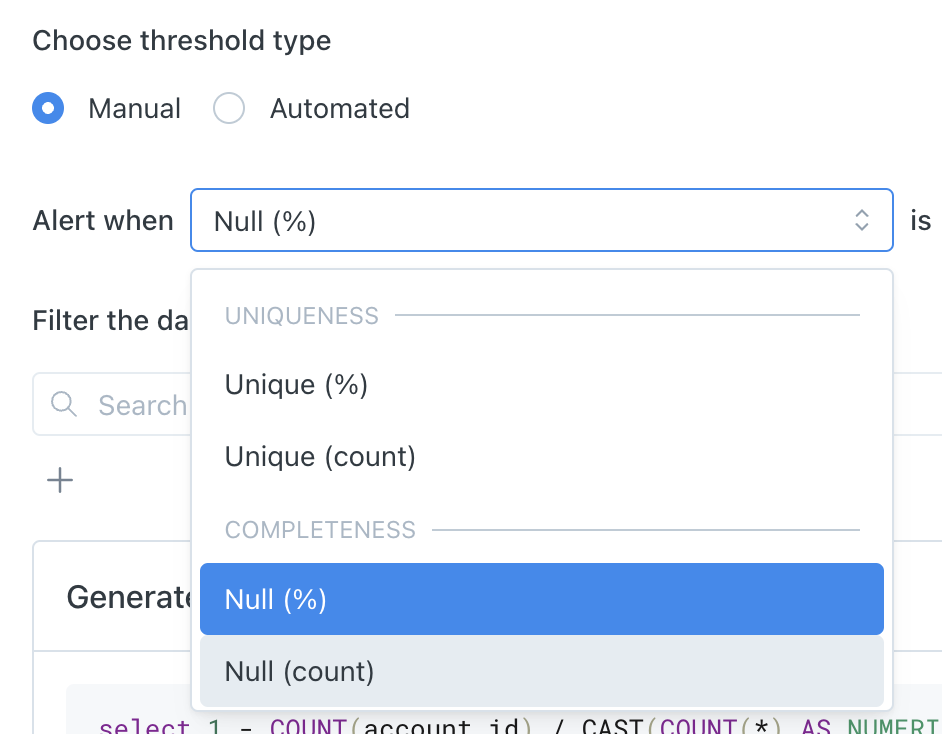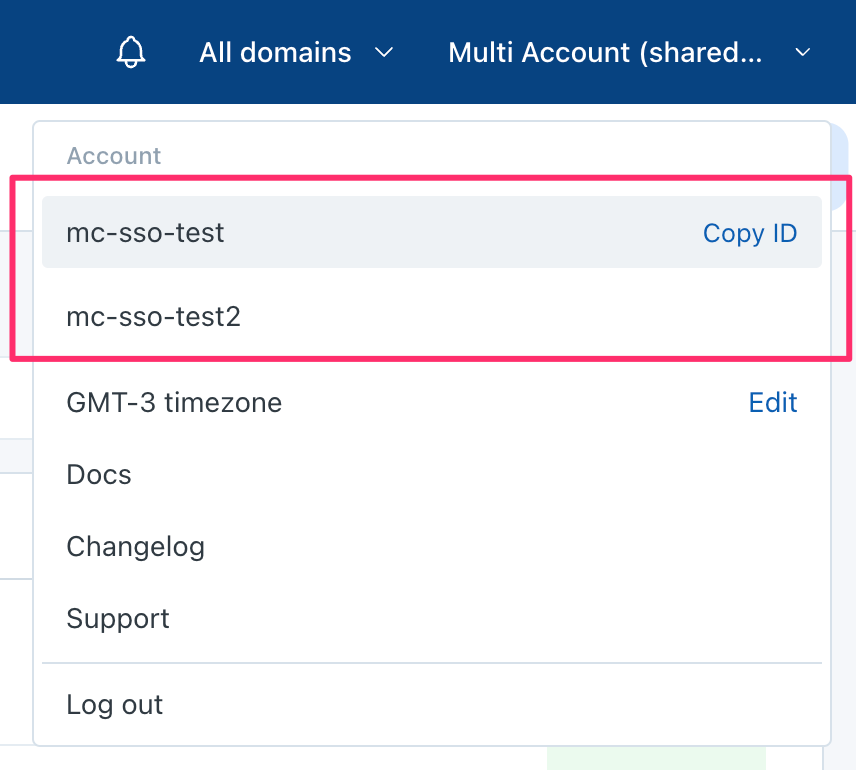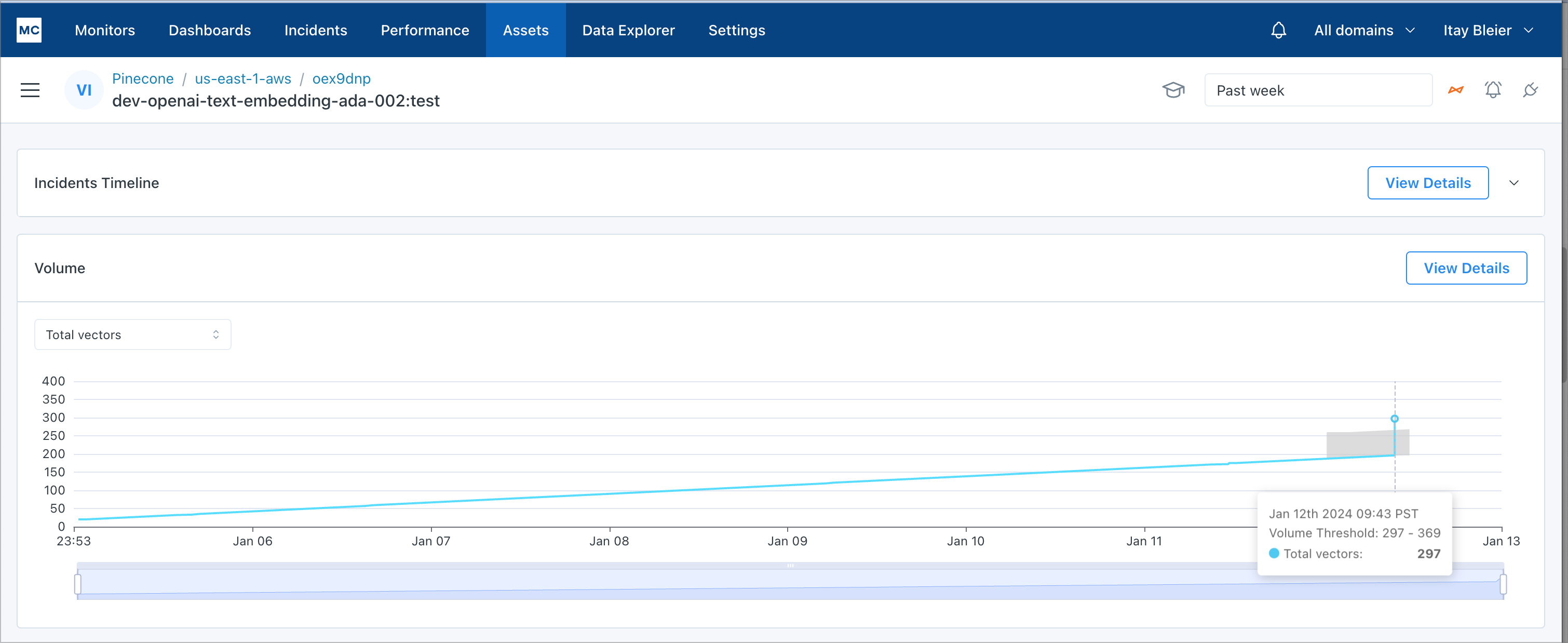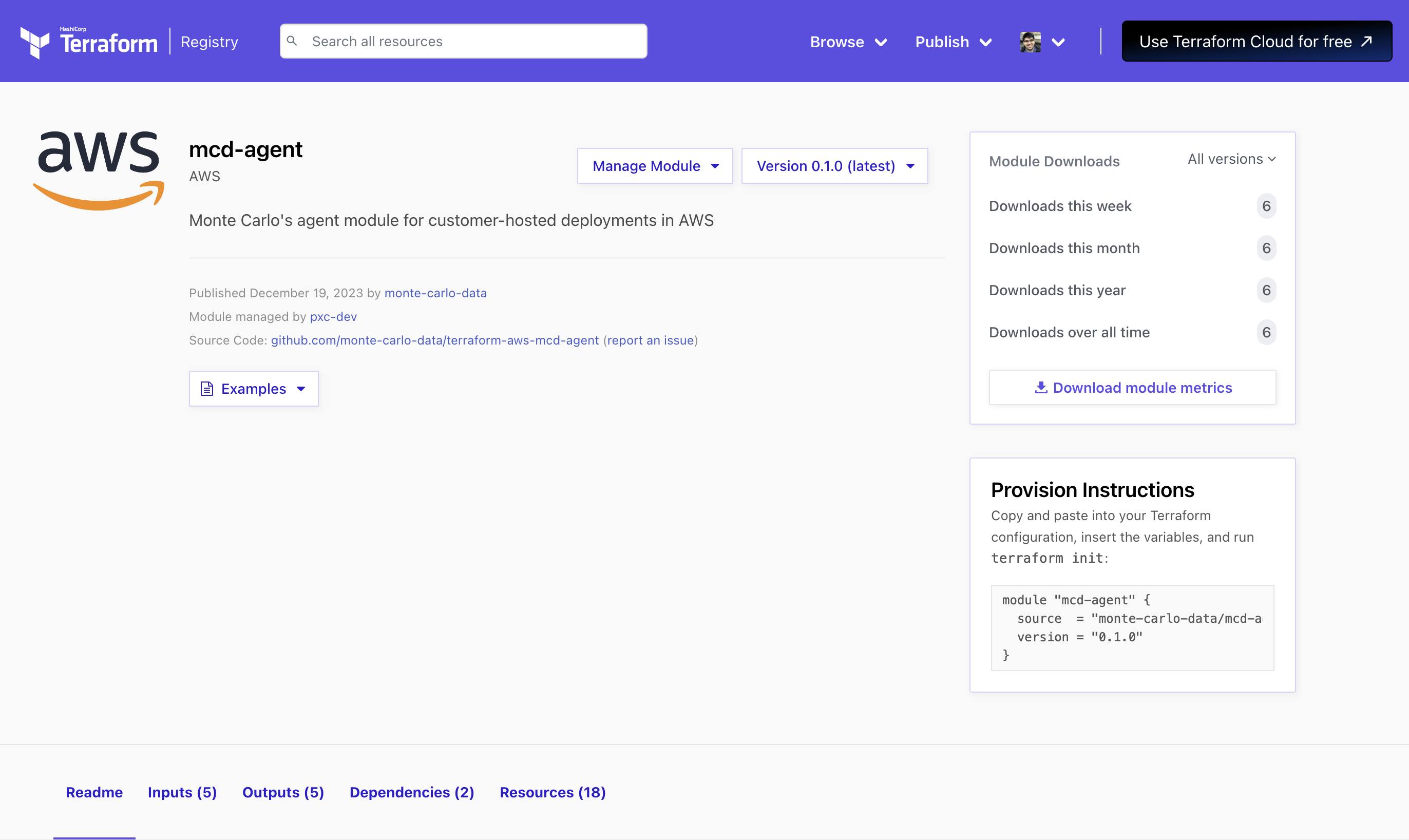We've added 38 new metrics to Field Metrics Monitors. Check our docs page to see the full list of available metrics. Many of the newly released metrics are supporting manual thresholds only, and automated thresholds for them will be released soon.
In addition, we've introduced some categorization to help organize all the different field metrics:
- Uniqueness: these check for duplicates in unique keys like UUIDs, and for changes in cardinality
- Completeness: these check for ways that data can be null or otherwise unpopulated.
- Distribution: these check for shifts in the numeric profile of data
- Validity: check that values are honoring expected and usable formats, including common data entry errors.






